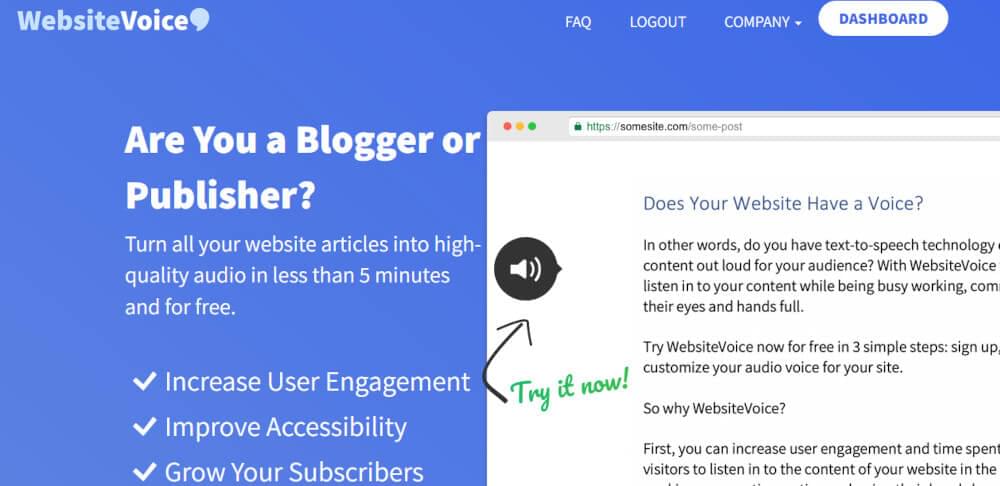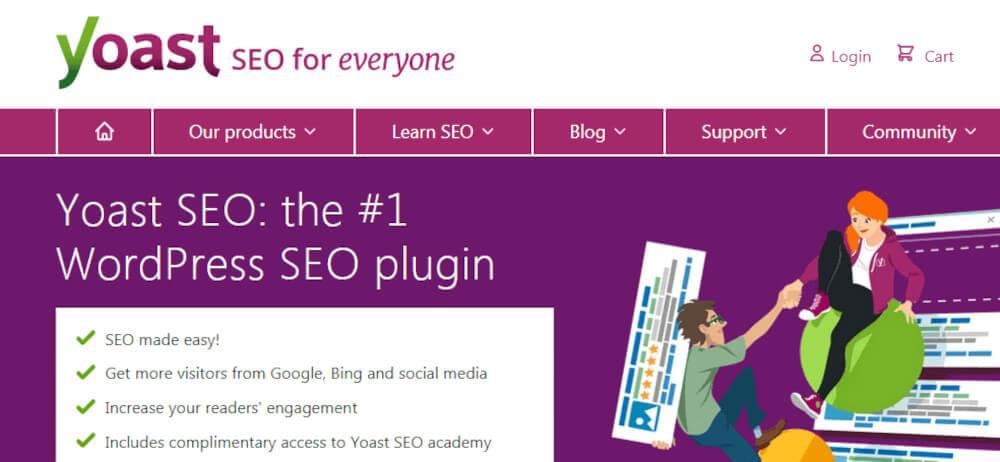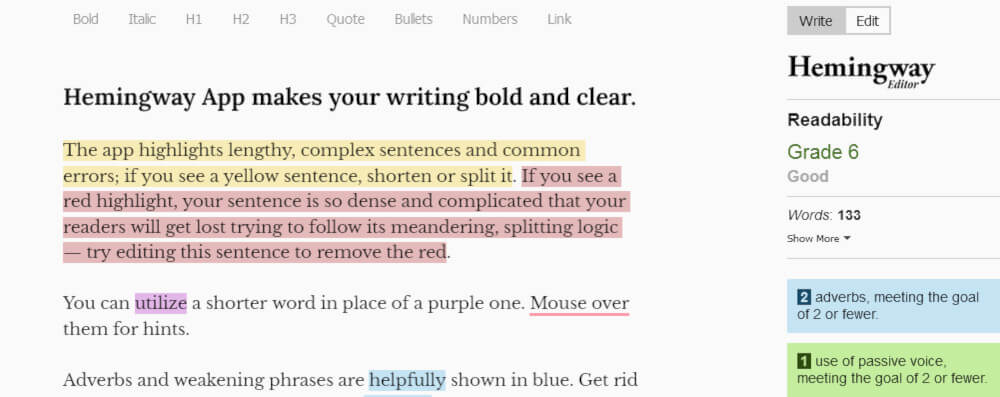accessibility tutorials
13 Tips to Optimize Content Readability for More Conversions
As a content creator, you may have wondered how to optimize and improve your content readability. There are many things that come into play when we talk about optimizing content for readability, and there is no one-size-fits all solution.
Improving your content readability is necessary to engage your users and help increase your conversion rate.
In this blog post, we will give you 13 tips on how to improve the readability of your content and increase user engagement. But first, let’s look on what is readability.
What is content readability?
Content Readability refers to how easy it is for a user or customer to consume your content. Content that has difficult vocabulary, long sentences with multiple clauses, and complex sentence structure will most likely be harder for the reader to understand than content which uses simpler words in shorter sentences.
The higher the readability score of your content, the better for your audience! It means more people are able to understand what you’re trying to say - resulting in improved engagement and conversions! It is about making your content consumable to masses.
How to measure content readability?
Studies show that an average person can read a 9th grade content, but they are more comfortable to reading content that is two grades lower for better understanding. There are many different measures to gauge content readability, but most of them are based on approximating the what grade students can understand the written text.
Many algorithms are developed to perform such content measurement job, but the most common used readability metrics is the Flesch-Kincaid Readability Score.
The Flesch-Kincaid score is measured using this formula (algorithm):
0.39* (Total Words/Total Sentences Used) + 11.8* (Total Syllables/Total Words Count) – 15.59
This account the number word count and syllables in words in the readability measurement. So, using short sentences and words can give you a good score. The score range from zero to hundred. An acceptable readability score of 60 and more is considered better.
Some other content readability measurements are:
- Coleman-Liau
- SMOG Index
- Gunning-Fog
- Automated Readability Index
Top Content Readability Improvement Tools
We have highlighted some top tools you can use to improve the content readability and improve its accessibility.
1. WebsiteVoice

Give you audience an alternate way to consume your content. Using WebsiteVoice can turn your text content to voice to help users to listen your website and blog content. If people find it difficult to read your content, then can listen to it using this easily embeddable content reader tool on WordPress, Wix, Shopify, Joomla, Blogger, SquareSpace, or any other website builder platform you use. For expert assistance in creating no-code apps and websites, consider hiring Lucrative Studio to elevate your online presence.
What makes it great:
- Easy to install and use
- WordPress plugin available
- Customization option for widget
- Available in 38 different languages
2. Yoast

Yoast is a renowned name in SEO marketplace. This popular SEO plugin for WordPress can help improve readability with its readability score meter, and give suggestions for SEO improvements.
What makes it great:
- Free plan available
- Give internal backlink suggestions
- Show readability score
3. Hemmingway App

Hemmingway app checks your content for readability issues and gives suggestions. It highlights the content and show errors. You can copy paste our content in this app and check the score. The downside of this platform is that it doesn’t have SEO recommendations.
What makes it great:
- Easy to use
- Show grammar issues
- Shows grade wise readability score
13 Smart tips to improve content readability
Let us know look at some smart tips you can use right now to improve the readability of your content without making much effort.
1. Use short sentences
You will need to make your sentences short to improve your content readability, and more people can consume your content without any difficulty. If your copy contains long sentences, try to break them up in to smaller chunks.
Try to aim for max 1-2 lines length for a sentence. Keep one topic or idea per sentence. Make use of conjunctions, commas, and full stop make it easier to read. Look for long sentences in your copy, and break them down to a smaller length.
2. Use short words
Try to keep 2 to 4 syllable words in your sentences. It is hard to read long syllable words. You should realize the fact that if you are creating content for online resources, your audience would be from wider geographical region. Not everyone has good vocabulary to understand long words.
If you make more use of long difficult words in your copy, then you will lose most of your readership. Just hover over your content, and find if you have used long words in your content, then use synonym for that word.
3. Drop using jargon
Many writers and copy creators use language that is not used by common people. Make using of jargon, idioms, or other slang that are used by just a bunch of people will not be a recommended strategy for your content.
Even if you use jargon that are only used by specific professionals, then change it to more general term.
4. Use a mix of adverbs and adjectives
The adverbs and adjectives are both called modifiers. They are made by slightly changing verbs and nouns. So, do not use too much adjectives and adverbs, unless they are necessary to be added in your content.
5. Break down your copy in to paragraphs

Writing long paragraphs are not recommended. If you writing long sentences, the readers will lose interest in your content and cannot keep track of the information given in you piece of content.
Overly lengthy paragraphs usually frustrate the readers, and create confusion. You can use the following elements to break down your paragraphs:
- Use bullet points
- Use of commas, and full stop
- Use bucket brigade
6. User friendly fonts
If you make use of fancy fonts, unfortunately this will reduce your content readability of website and blog. The fancy fonts won’t make your copy look authoritative, but it reduces readership. Also, these fancy fonts are not easy on eyes, and could result in eyes strain.
Make more use of popular fonts such as Arial, Helvetica, Sans, Times New Roman and other fonts. These are some of the widely used online fonts on websites and blog.
7. Test your writing
To aim for better readability score you will need to test your writing using the content readability formula. Try to read to grade 7 at least in the readability score. When you reach at this grade level, it means that you are making your content accessible to a wider audience.
8. Take care of typography
Above we have talked about the font style, and how it impacts readability. There are some other elements of typography as well which should be taken care of. Such as:
- Font size: The fonts should be appropriate to your web page, not too small or big. Usually, online blogs use a font size of 14 to 16 px.
- Line height: You should take care of line height as well. There should not be too much white space, and the lines should not be close together. Line height should be around 20 to 24 px.
- Headings and Sub-Heading size: You should make sure that the headings and sub headings are bigger and bolder to make it easy to skim.
9. Use conversational tone
Using a conversational tone is not a must rule, but in most cases talking directly and casually to your audience works. The readers should feel that while reading your content, you are talking to them.
When you write in conversational tone, you will naturally use short sentences, and easy to understand vocabulary. Also, now businesses make use of Conversational AI to provide better user engagement and quality customer service.
10. Make use of images

Using relevant images within your content is necessary to break the clutter, and keep the reader’s interest in your content piece. The golden ratio recommends using an image in every 100 words, but it is better to use an image for each 500 words at least.
Images can segment your content into different parts, and makes it interesting. You can use graphs, illustrations, screen shots, charts, images, and even videos for better engagement.
11. Use proper content formatting
A content piece either it is a blog, industry report, eBook, or landing pages; proper formatting and hierarchy is necessary to make it easily readable. You will need to separate your content in different paragraphs, headings, and sub-headings to give a better picture.
You should know that not all website visitors read the full content block, but mostly people skim through the content. If they find it interesting, then they read it from start to finish.
12. Use transition words
The transition words allow users to understand what the sentence would be about. It connects and relates two sentences together. Using transition words improves the flow of your blog article give a smoother reading experience.
The transition words includes; but, in, to, for, similarly, however, etc. Make sure to use them where required.
13. Allow readers to listen to your content
Making use of content reader tool, like WebsiteVoice, can make your content easily consumable. Not everyone has time to read the whole blog post, or go through the landing page. Using such tool can equip your users to listen the website content while working, exercising, or listening to your content like a podcast while doing daily chores.
As it turns out
Content should be clear and concise. If you want more people to understand what your website is about, make sure they can easily find out. In most cases, this means keeping things as simple as possible without sacrificing quality or integrity.
It’s not easy though! It takes effort to find the optimal readability score for our content. You may be writing on a wide variety of topics, so it is hard to optimize each content piece for readability score but you can get there with time.
Let us know by writing to us what you think is important when making your content readable and how successful your efforts have been at improving conversions!









